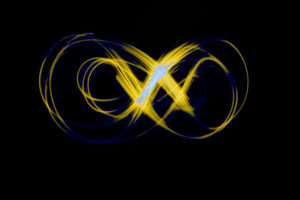
Chirality is a fascinating phenomenon with widespread applications that is best known for its role in providing recognition to molecules during chemical reactions. Generally, any object is considered “chiral” if its mirror image cannot be superimposed on itself. Recently, chirality has attracted attention in plasmonics and nano-optics, although the fact remains that plasmonic nanostructures require the artificial induction of chirality by morphing into specific geometries or embedding chiral molecules
Mie−Gans theory optically characterizes ellipsoidal and by extension generally elongated nonchiral metal nanoparticles (MNPs) and is ubiquitous in verifying experimental results and predicting particle behavior. Recently, elongated chiral MNPs have garnered enthusiasm, but a theory to characterize their chiroptical behavior is lacking in the literature. Here we study an ab initio model for chiral ellipsoidal MNPs to address this shortcoming and demonstrate that it reduces to the general Mie−Gans model under nonchiral conditions, produces results that concur with state-of-the-art numerical simulations, and can accurately replicate recent experimental measurements. Furthermore, to gain physical insights, we analyze factors such as background medium permittivity and particle size that drive the chiroptical activity using two types of plasmonic chiral MNPs. We also demonstrate the utility of our model in metamaterial design. Generic features of our model can be extended to characterize similar elongated chiral MNPs, fueling many other variants of the current model.
This work is supported Discovery Grant and by the MASSIVE HPC facility (www.massive.org.au).